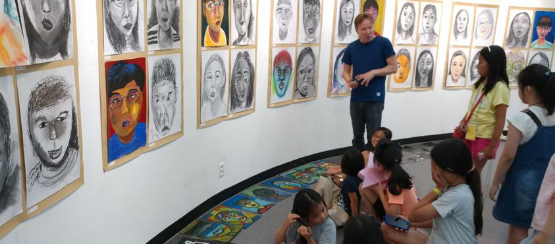

All learners, regardless of age, nationality or background, should have entitlement and access to visual art education.
Education through art inspires knowledge, appreciation and creation of culture.






-
We believe that:
-
All learners, regardless of age, nationality or background, should have entitlement and access to visual art education.
-
Education through art inspires knowledge, appreciation and creation of culture.
-
Culture is a basic human right. Culture promotes social justice and participation in contemporary societies. A strong democracy is an inclusive society. And, an inclusive society is a strong democracy.
-
All learners are entitled to an art education that deeply connects them to their world, to their cultural history. It creates openings and horizons for them to new ways of seeing, thinking, doing and being.
-
Educational programmes and curriculum models should prepare citizens with confident flexible intelligences, and creative verbal and non-verbal communication skills.
-
Visual art education opens possibilities and opportunities for learners to discover themselves, their creativity, values, ethics, societies and cultures.
-
Visual art education develops an understanding of creative practice through knowledge, understanding and production of art in contexts.
-
Visual art education develops the abilities to think critically and imaginatively, it fosters/aims at intercultural understanding, and an empathic commitment to cultural diversity.
-
Visual art education should be systematic and be provided over a number of years, as it is a developmental process. Learners should engage with 'making' alongside learning about art.
-
Visual art education develops a range of literacies and aesthetic dispositions, with a major focus on visual literacy and aesthetic assessment.
-
Visual literacy is an essential skill in today’s world. It encourages appreciation and understanding of visual communication and the ability to critically analyse and make meaningful images.
-
Art encourages the development of many transferable skills which enhance learning in other curriculum areas.
-
Visual arts in schools help students to understand themselves, building confidence and self-esteem, and contribute significantly to their own well-being.
Published by InSEA, 2018.



